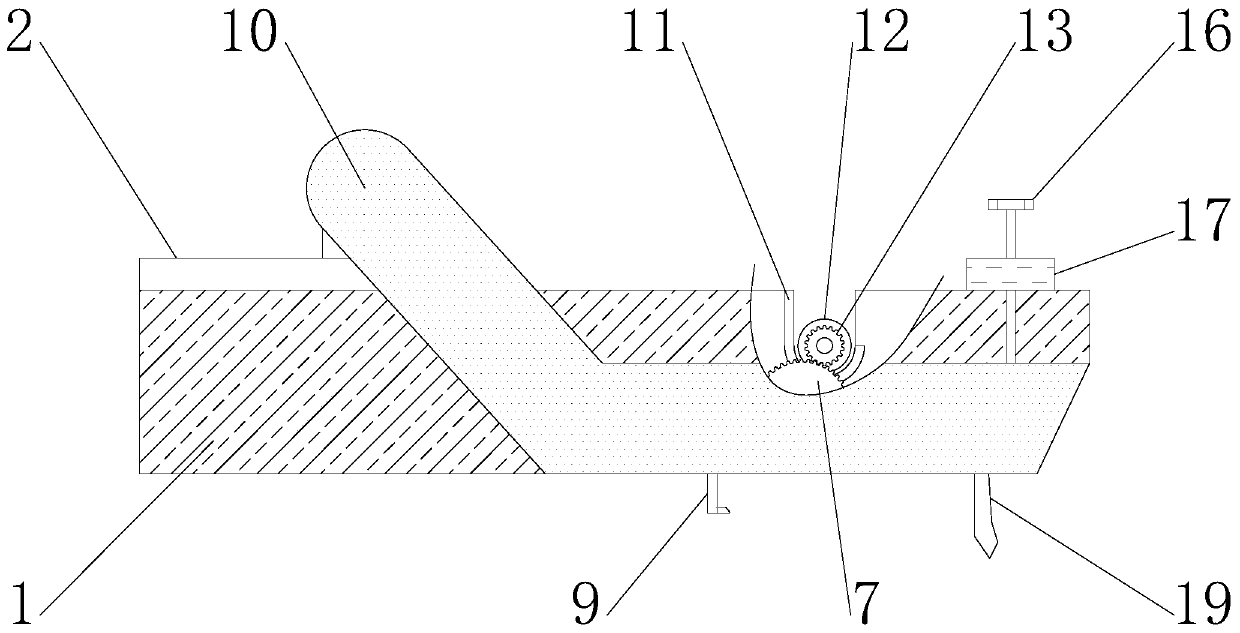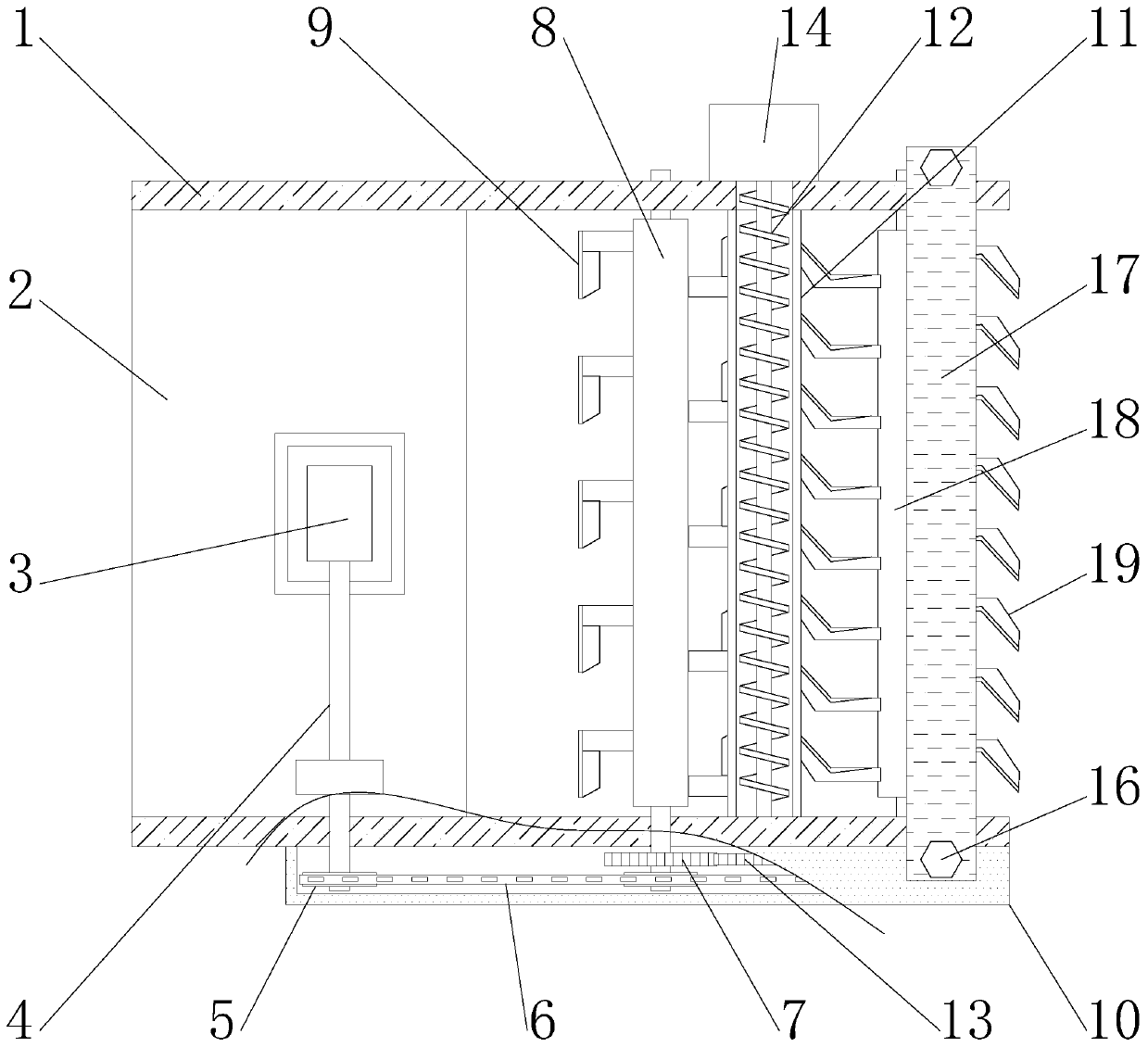Multipurpose novel rotary cultivator
A rotary cultivator and multi-purpose technology, applied in the field of rotary cultivators and multi-purpose new rotary cultivators, can solve the problems of difficulty in cleaning excess clods, difficulty in cleaning excess clods, and reducing the efficiency of reclamation, and achieve a simple structure, Easy to operate and prevent entanglement
- Summary
- Abstract
- Description
- Claims
- Application Information
AI Technical Summary
Problems solved by technology
Method used
Image
Examples
Embodiment Construction
[0021] In order to make the purpose, features and advantages of the present invention more obvious and understandable, the technical solutions in the embodiments of the present invention will be clearly and completely described below in conjunction with the accompanying drawings in the embodiments of the present invention. Obviously, the following The described embodiments are only some, not all, embodiments of the present invention. Based on the embodiments of the present invention, all other embodiments obtained by persons of ordinary skill in the art without making creative efforts belong to the protection scope of the present invention.
[0022] The technical solutions of the present invention will be further described below in conjunction with the accompanying drawings and through specific implementation methods.
[0023] In the description of the present invention, it should be understood that the orientations or positional relationships indicated by the terms "upper", "...
PUM
 Login to View More
Login to View More Abstract
Description
Claims
Application Information
 Login to View More
Login to View More - R&D
- Intellectual Property
- Life Sciences
- Materials
- Tech Scout
- Unparalleled Data Quality
- Higher Quality Content
- 60% Fewer Hallucinations
Browse by: Latest US Patents, China's latest patents, Technical Efficacy Thesaurus, Application Domain, Technology Topic, Popular Technical Reports.
© 2025 PatSnap. All rights reserved.Legal|Privacy policy|Modern Slavery Act Transparency Statement|Sitemap|About US| Contact US: help@patsnap.com



